News Archive
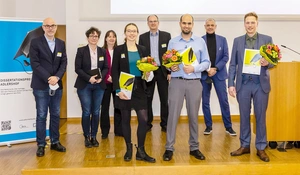
Dr. Amran Al-Ashouri receives 2021 Adlershof Dissertation Award
The physicist researched how highly efficient tandem solar cells can be developed using new organic contact materials.:
On 17 February 2022, the Adlershof Dissertation Award was given out for the 20th time. This year’s award went to Dr. Amran Al-Ashouri (third from left) and included a prize money of 3,000 euros. It is jointly endowed…
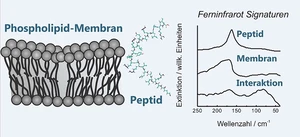
Probing molecular interactions of antimicrobial peptides
Researchers at PTB in Adlershof identified characteristics that make the peptides alternative drug candidates for conventional antibiotics:
The far-infrared spectroscopy in the so-called terahertz (THz) spectral range (wavenumbers from 40 cm-1 to 400 cm-1) allows for the non-invasive probing of biomolecular interactions due to the detection of vibrational…
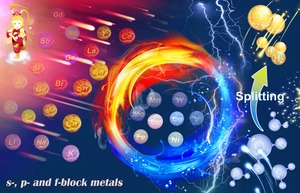
Innovative catalysts to produce green hydrogen
Experts from CatLab at HZB and TU Berlin present an overview on current knowledge and outlook for future research:
Highly efficient (electro-)catalysts are essential for the production of green hydrogen, the chemical industry, fertiliser production and other sectors of the economy. In addition to transition metals, a variety of…
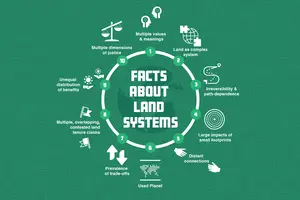
New study identifies “10 Facts” about global land use
International land use scientists urge policymakers to adopt more sustainable approaches to addressing climate change, biodiversity and other global crises:
A new report released in the Proceedings of the National Academy of Sciences of the United States of America (PNAS) is a call to action for policymakers worldwide seeking to develop sustainable and equitable solutions…

Young Scientist 2022 – Lia Beraldo da Silveira Balestrin
The Brazilian researcher received the award announced by LUM GmbH for her work on asphaltene deposition in crude oil:
From January 24th to 25th, 2022, LUM GmbH hosted the 10th International Conference for Dispersion Analysis and Materials Testing. 90 participants from 24 countries around the world took part. Five candidates from…
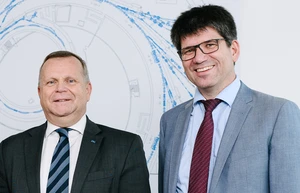
Restructuring in HZB management
Prof. Bernd Rech assumes the role of sole Scientific Director of Helmholtz-Zentrum Berlin:
In a special meeting of the HZB Supervisory Board on 8 February 2022, Prof. Jan Lüning retreated from his position of Scientific Director of HZB. Lüning asked in December to be dismissed and the Supervisory Board has…
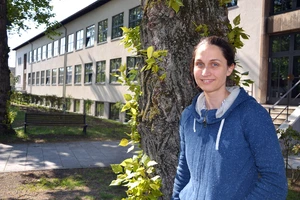
Humboldt-Universität zu Berlin appoints Eva Unger to professorship
Eva Unger researches perovskite semiconductors for solar cells at Helmholtz-Zentrum Berlin and is now a professor at HU Berlin as well:
Eva Unger was now appointed as W2 professor at Humboldt-Universität zu Berlin. Prof. Dr. Eva Unger leads a research group at HZB. She develops scalable technologies for the production of perovskite semiconductors for…
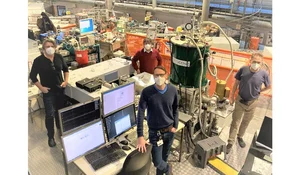
More power for energy and magnetism research in Adlershof
New superconducting magnet in operation at BESSY II:
Electron paramagnetic resonance (THz-EPR) at BESSY II provides important information on the electronic structure of novel magnetic materials and catalysts. In mid-January 2022, the researchers brought a new,…
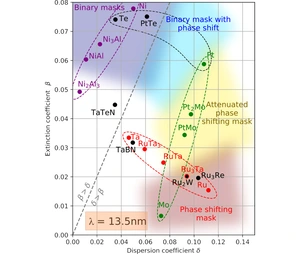
Catalogue of optical constants of 19 materials in the EUV range published
PTB launches database to support the development of optical components in semiconductor industry:
The introduction of EUV lithography in semiconductor industry has significantly expanded the technologically relevant spectral range of electromagnetic radiation to include extreme UV radiation (EUV). For the…
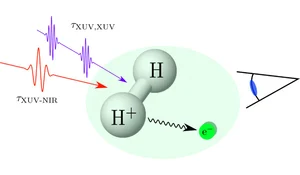
Center stage for quantum mechanical entanglement in an attosecond laser laboratory
MBI researchers demonstrate possible link between ultrafast laser spectroscopy and the field of quantum information with pump-probe experiments:
Quantum mechanics is famous for the way that its predictions challenge intuitive human thinking developed through the way that we experience the everyday world around us. Among other things, quantum objects can…
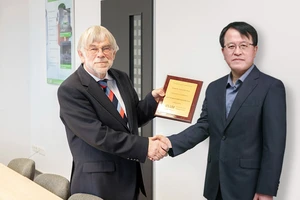
Hybrid international sales meeting 2022 successfully completed
Training on devices of the new LUMiSpoc® product line & new applications in battery and hydrogen research strengthen LUM GmbH in the world:
From January 20th to 21st, the International Sales Meeting of LUM GmbH took place for the 23rd time in a row. Despite the ongoing pandemic, the traditional face-to-face event could be held in a hybrid variant. The…

Island in a lake of lava – the Martian volcano Jovis Tholus
DLR's HRSC stereo camera on board ESA's Mars Express mission has been providing high-resolution images of Mars for the past 18 years :
These images, created using data acquired by the High Resolution Stereo Camera (HRSC) on board ESA's Mars Express orbiter, show the Jovis Tholus volcano and various other landscape features, such as tectonic faults,…
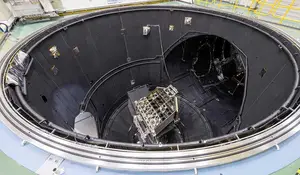
Search for extrasolar planets: ESA mission PLATO clears decisive hurdle
DLR institutes in Adlershof have developed hardware for the space telescope and will be involved in its operations:
The European Space Agency (ESA) has given the green light to build the flight models of the spacecraft and science payload for the PLATO mission to search for extrasolar planets. The Critical Milestone Review…
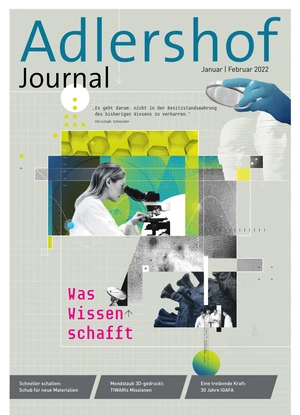
Adlershof Journal January/February 2022
How knowledge is created:
Shifting faster: A push for new materials // 3D-printed lunar dust: TIWARI’s missions // A driving force: 30 years of IGAFA
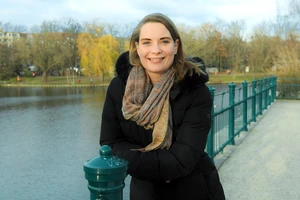
In conversation with Franziska Hagos
She is a true Polyanna and head of the Humboldt Explorer project:
When asked about role models guiding her career path, Franziska Hagos has to think long and hard. One thing she couldn’t resort to was the experience of growing up in a household of academics. Finally, she remembers…
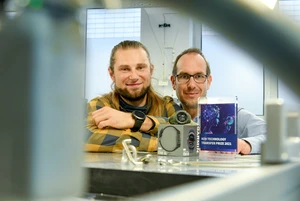
From the lab to the store
HZB researchers are supplying smartwatches with solar energy:
Ideally, the winners of the HZB Technology Transfer Prize go down the road of transforming a research question into a product and integrating it into our lives. The team surrounding Tobias Henschel and Bernd…
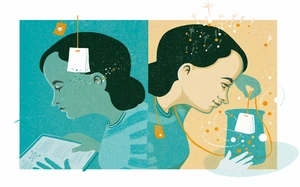
Excellently managed – excellently outdated – excellently designed!
Essay by Jakob Nolte, biology student and the winner of the “Jugend forscht” national young science competition:
Science is “Wissenschaft” in German, which literally means “creating knowledge”. The German word “Ausbildung” for education or training implies a space to develop interests and skills. When taking a closer look at…
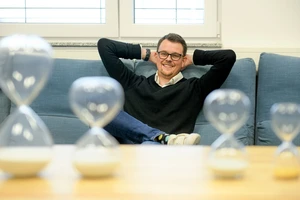
The melanoma hunter
Sebastian Ahlberg works on improving diagnostics in Adlershof:
Something to do with biology. This was a given for Sebastian Ahlberg, even when he was still at school in Güstrow, his hometown. Today, he is the head of a “start-up doing research” in Adlershof. This is what his…
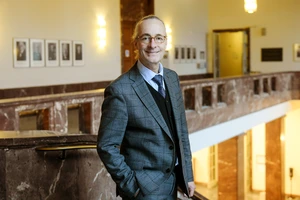
Exploiting scientific potential
An interview with Christoph Schneider, HU vice president for research:
Christoph Schneider is a professor for climate geography, founding member of “Scientists for Future”, and, beginning in last summer, Humboldt-Universität’s vice president for research. In this interview with Adlershof…
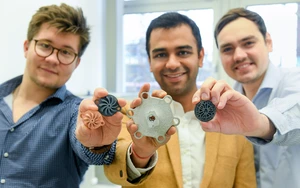
3D-printed lunar dust
TIWARI’s earthly and extra-terrestrial missions:
The Adlershof-based 3D-printing start-up TIWARI Scientific Instruments (TSI) works for many terrestrial customers, including car, plane, and machine builders. However, founder Siddharth Tiwari’s thinking goes beyond…